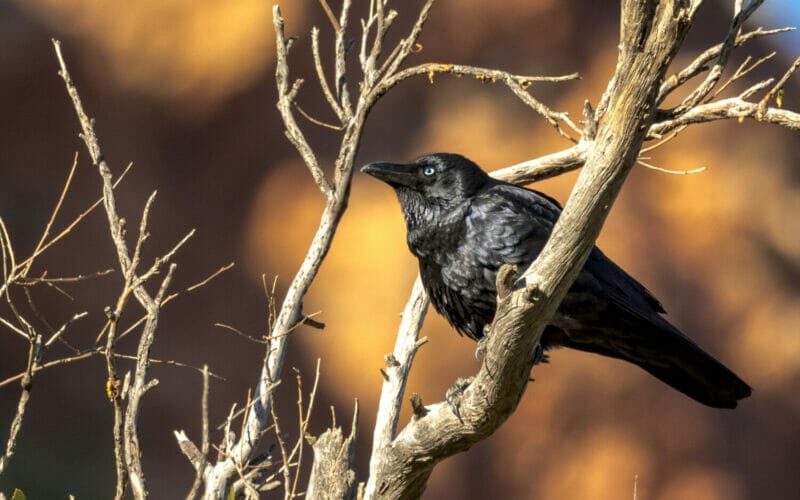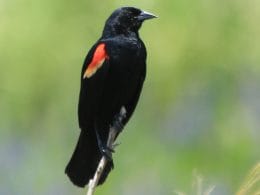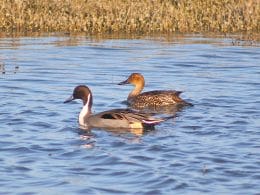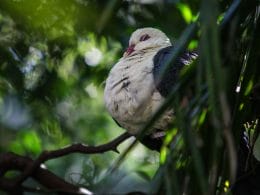The American Kestrel is the smallest raptor found in the United States and is affectionately known as the Sparrow Hawk. In this post, we investigate everything about this brilliantly colored bird of prey, from where it lives to how and what it hunts and eats.

Identification
What does it look like?
This is a multi-colored bird with a tan body fading to buff on the belly. The head is gray with black and white striped cheeks. Its wings look silvery gray when stationery but show an intricate pattern in flight. Under the wings and across the body it is buff with darker barring. Lastly, the tail long and slim with distinct dark tips.
How big is it?
The American Kestrel is very small, a similar size to the Mourning Dove.
- Length: 8.7-12.2 in (22-31 cm)
- Weight: 2.8-5.8 oz (80-165 g)
- Wingspan: 20.1-24.0 in (51-61 cm)
What does it sound like?
The Sparrow Hawk has several calls. The call most frequently heard is a rapid and shrill contact call, which you can hear below.
It has other calls that are common to most birds. They are begging by young birds for food and a soft chitter call which is usually heard between mating pairs.
Distribution and Range
This kestrel is widespread across the Americas, including Canada and Alaska. It is absent from Amazonia. It can be seen all year round in the United States.

The wide range of the American Kestrel means that there are an incredible 17 sub-species. However, only 3 of those sub-species are found in the United States.
Migration
In most of the United States, the American Kestrel is resident and seen all year round. However, it is migratory so birds may move within the continent to their preferred breeding grounds.
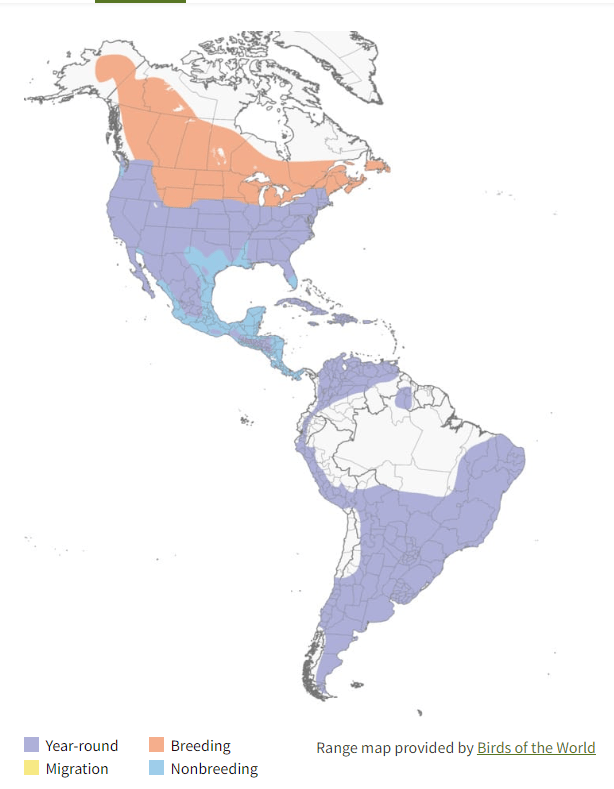
Generally, the American Kestrel is sedentary in South America. It breeds in Canada and moves south during the winter months.

Habitat
The Sparrow Hawk is an adaptable wee bird and can thrive in the following environments:
- open parkland
- agricultural areas
- grasslands
- deserts
- urban and suburban areas
- meadows and fields
- open forests and woodlands
Breeding
The Sparrow Hawk is monogamous and pairs will stay together for some years. Choosing the nest site is also a co-operative activity and the male will regularly bring gifts to the female.
American Kestrel breed from late March and lay eggs until mid June. They nest in cavities in trees, either naturally created or by taking over holes excavated by woodpeckers. They prefer sites that face away from locally prevailing winds or seasonal storms. The eggs are laid directly in the cavity with no nesting material brought in. It is a relatively long incubation period at around 30 days.
Once hatched, the chicks are attended to by the female for at least a week with the male bringing food for all of them. The chicks are ready to fledge at around 30 days.
You can see how dependent the chicks are on their parents and how long it takes for them to be able to function alone. Their incessant need for food and warmth keeps both parents very busy. Once fledged, the family stay together as the parents teach the chicks how to hunt.
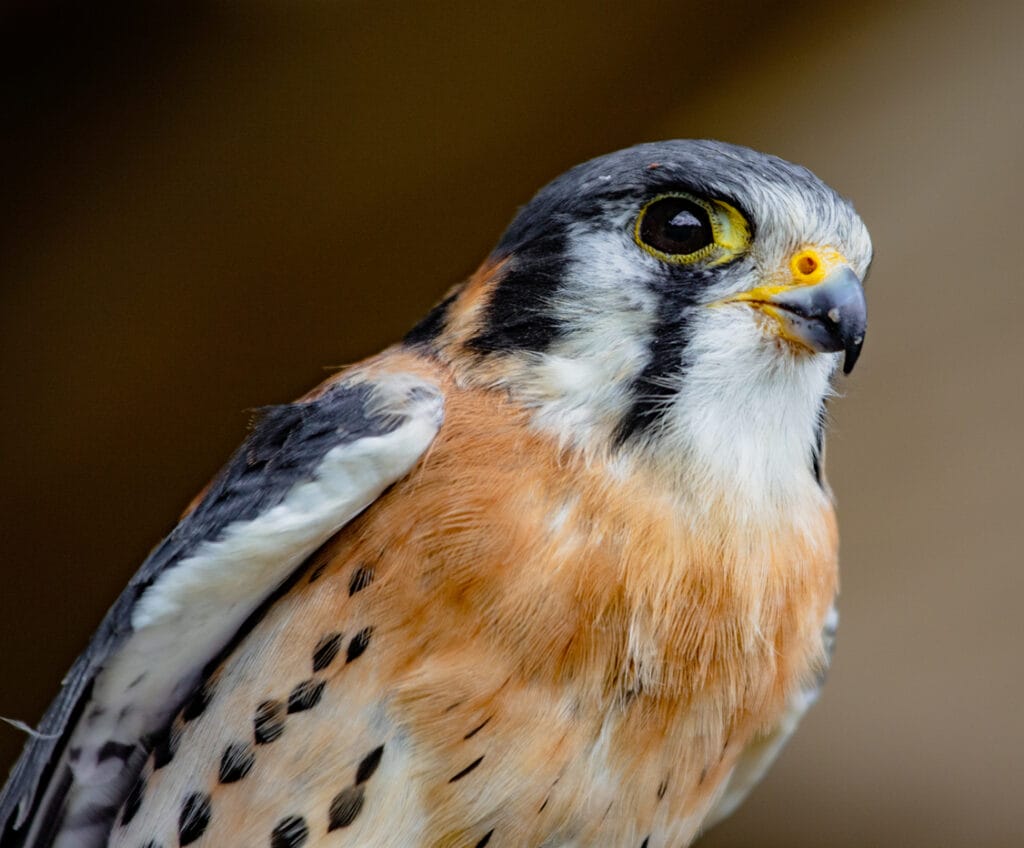
Diet and Hunting
Perching
American Kestrel are regular perching hunters, sitting and waiting until they spy prey and then pouncing on it. They prefer to hunt in open country and will be seen sitting on utility poles, fence posts and dead trees
Hovering
We have all seen these little birds in the countryside hovering over open fields and then swooping down to catch an animal. However, it is actually much less common for Sparrow Hawk to hunt in this manner.
The Kill
Most of the prey caught by the Sparrow Hawk is on the ground but as an opportunist, it will at times take small birds or insects in flight. Once caught in the talons, the raptor bites the neck to either kill or paralyze its victim. Depending on the environment, it will eat the prey there and then or take it to a higher place of safety to consume.
What does it eat?
American Kestrel will take a wide range of animals, including:
Insects
- grasshoppers
- beetles
- dragonflies
- cicadas
- butterflies and moths
Mammals
- mice
- voles
- shrews
- bats
- small birds
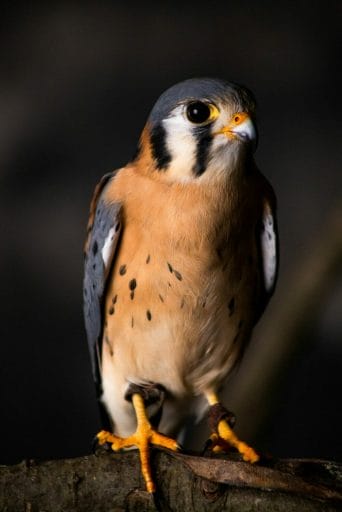
Reptiles and Amphibians
- snakes
- lizards
- frogs
- fingerlings
- small trout
Arachnids
- Spiders
- Scorpions
As with other birds that inhabit a range of climates and habitats, the American Kestrel relies on the abundance of local prey species. Perhaps its success is due to that adaptability. Having said that, the American Kestrel is in decline and while it is still class as Least Concern, this decline is an indication of habitat loss.
The Sparrow Hawk will cache uneaten or surplus food for later, only from larger prey. It stores them in tree cavities or on the ground under vegetation.
Some Interesting Details
- The American Kestrel can see UV light and it is thought that this helps them follow urine traces towards prey.
- As well as the colloquial name Sparrow Hawk, the American Kestrel also has other names – grasshopper hawk, Killy hawk, Cernícalo Americano (Spanish) and Crécerelle d’Amérique (French).
- The nest of the American Kestrel is not very nice. They spray feces on the cavity walls and the floor holds the remains of their kills.
Conclusion
The American Kestrel is a stunning bird, that cannot be denied but it is so interesting that they take so long to incubate and raise their chicks. Most songbirds of the same size as the Sparrow Hawk fledge within 2 weeks!
I also always thought of them as primarily hunting by hovering, but studies have shown that over 90% of their kills come from perching and pouncing.
It certainly is a remarkable little bird.
FAQ
While it is not advised that anyone interferes with wild animals, there is a long history of American Kestrel being used in falconry. Their small size and calm nature makes them ideal to handle. If you are interested in learning more, find a local falconry society.
It is relatively short in the wild. The life expectancy of an American Kestrel is under 5 years.
When flying normally (ie, not in a dive), the American Kestrel can fly at up to 40 miles per hour.






